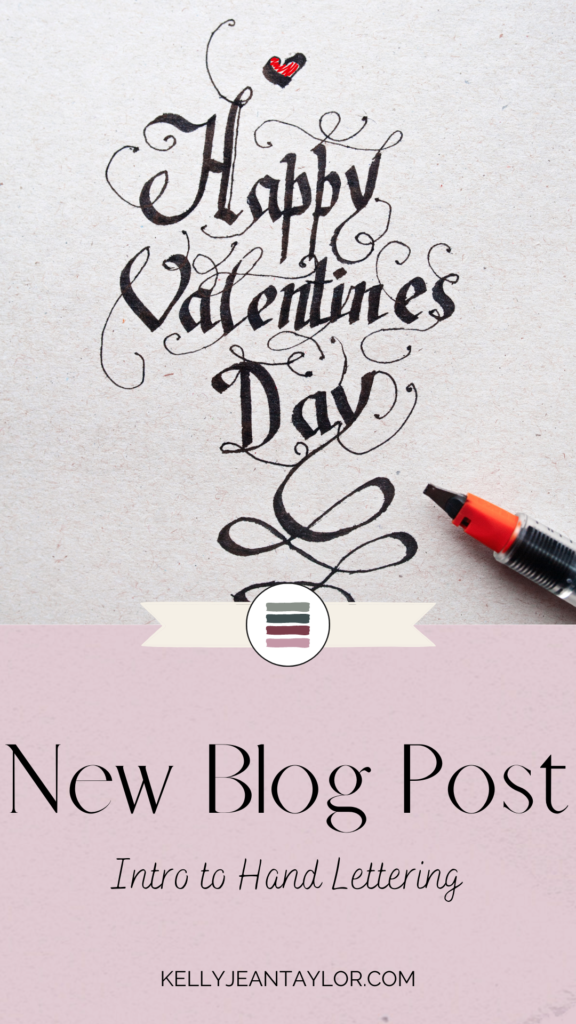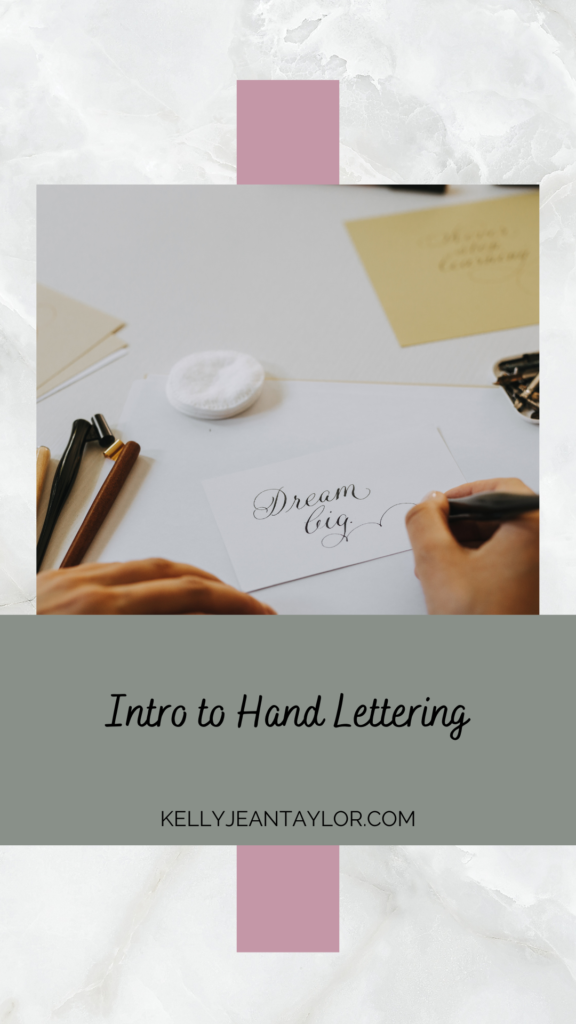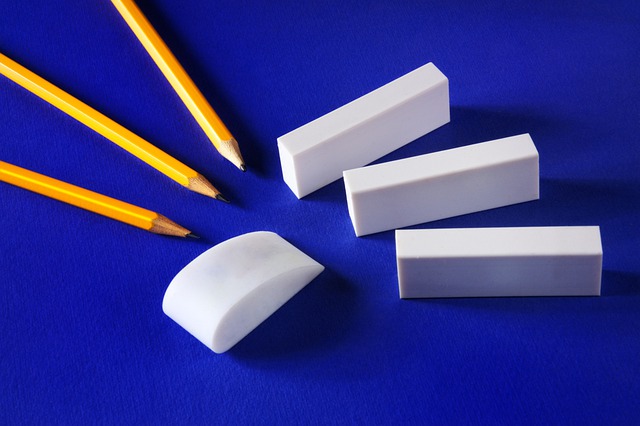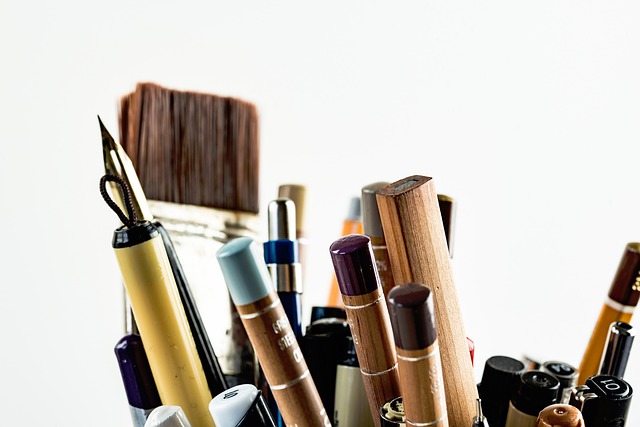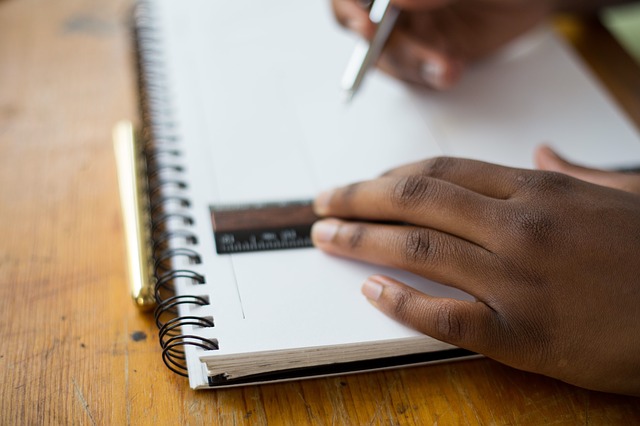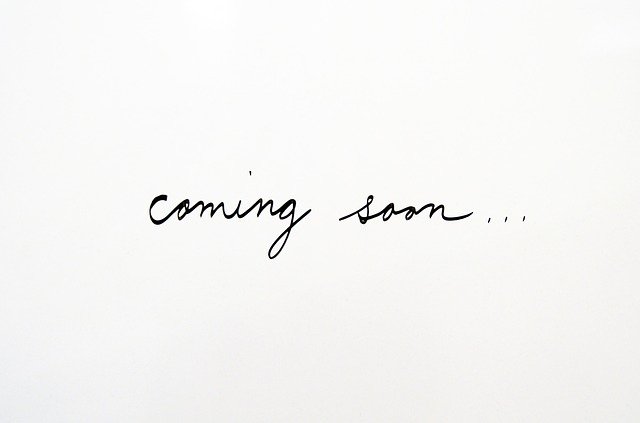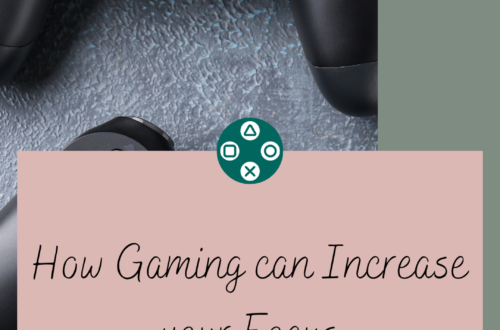
Intro to Hand lettering
What is Hand lettering?
So you’re interested in learning the creative art of hand lettering. That’s great! But before you jump in head first. Let’s discuss what hand lettering is. Hand Lettering is a creative way of using drawing materials to make beautiful works of art using letters. You can also add little decorative marks or embellishments for a more creative aspect.
Materials for Hand lettering
The beauty of hand lettering is that you can choose almost any writing utensil and create amazing hand lettering masterpieces with them, but you have to acquire them first.
Paper
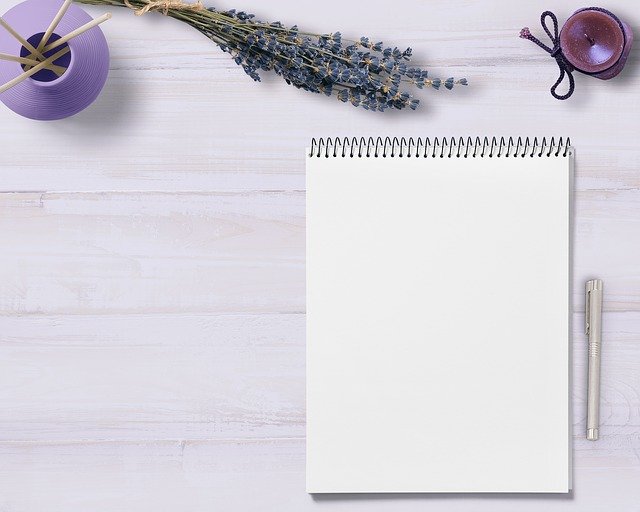
For the bases of your hand lettering you would need paper. You can use whatever you have laying around, such as computer paper, construction paper, cardstock, or sketchbook paper. I prefer to use my spiral dotted journal. It’s easy to maneuver, you can flip it so the spine isn’t in your way when you’re drawing, and the paper holds up pretty well.
Pencil
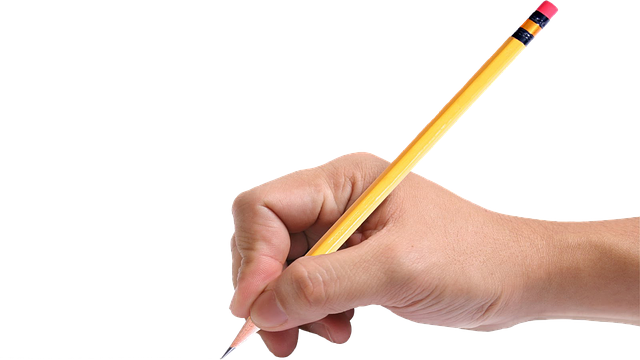
This is the basic of any drawing utensil. I don’t use any fancy mechanical or drawing pencils. Just an old fashion number 2 pencil for lightly sketching the letters and outlining the designs. Something I can write lightly enough to still see, but am able to erase when my creativity is complete.
<center><a href="https://www.tkqlhce.com/click-100381204-15075211" target="_blank">
<img src="https://www.lduhtrp.net/image-100381204-15075211" width="300" height="250" alt="" border="0"/></a></center>Eraser
A regular pink eraser will work for most mistakes (Hey, we all make them) or sketched areas once the project is complete. I use my white block eraser for most of my work, it doesn’t leave streaks or smudges. If I have a heavy duty mistake I need to erase, I use my kneaded eraser, which is great, it doesn’t leave any residue or crumble on your paper.
Pens and Markers
You can use a lot of different types of pens and markers for lettering. I personally like the Tombow Fudenosuke Brush Pens, the Arteza Real Brush Pens and my Prismacolor Premier Fineliner pens. The Fudenosuke Brush Pens has a more firm nib for more controls lettering, as where the Arteza brush pen has more flexibility for more whimsical and fancy lettering. I use my fineliners for line touchups or thin line lettering. I also want to mention gel pens, they are wonderful for accents and minor details. If I want to get fancy I use my calligraphy pens.
Rulers
You can use a normal wooden or plastic ruler, if you wish. I know some people use roller rulers, circular rulers, protractors or mini rulers, which I use almost on a daily basis in my Bullet Journal. I use my mini ruler to map out where and at what angle I want my lettering to be.
<center><a href="https://www.tkqlhce.com/click-100381204-15075211" target="_blank">
<img src="https://www.lduhtrp.net/image-100381204-15075211" width="300" height="250" alt="" border="0"/></a></center>
Font Families
There are several different fonts out there that you can use. You see them everyday, whether reading your email, watching a YouTube channel, reading a book or blog post, watch a movie or TV show with captions. Most people use creative fonts for posters or flyers. There are four main font families. Serif, San Serif, Script and Display fonts. Let’s take a closer look at these fonts.
Serif Font
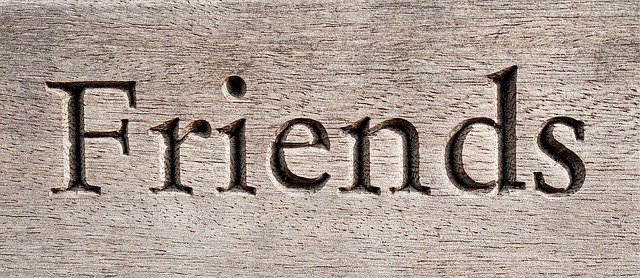
Referred to as the older style font, the serif family consists of fonts such as New Times Roman, Calisto and Georgia. This was the most common font we used. It is distinguishable by it’s “serifs”, which are short lines added to the letters to make them stand out. You can see in the word “friends” above all the short lines added to the bottom and sometimes the tops of the letters.
Sans Serif Font

This font is without the short lines and the word “sans” means “without”, as in the image of the word “Sacred” above. Sans Serif fonts are more common now a days, making the font look more polished and professional with clean edges and straight lines. The most common forms of Sans Serif are Ariel, Verdana and Helvetica. I personally use these fonts on a daily basis. I love the way Helvetica looks.
Script Font
Script fonts are what most people would call cursive writing, which it the most popular in hand lettering. The easy flow of the letters and style is appealing to most and gives your lettering a more hand written feel. Brush Script is the most popular script font, but there are many more to try. The line weight can take presences here as well. Most script hand lettering have thin upstrokes and thick downstrokes. This will take some practice and patience to master.
Fancy Fonts

Fancy Fonts or Display Fonts are very decorative fonts. They are used sparingly because most of them are difficult to read. Some are symbols or objects in place of letters. Take the image above. You can still see the word “Spring”, but the first thing I noticed was the colors and the flowers, which deviates from the actual word you are trying to present.
Practice your hand lettering
Hand lettering is not an easy thing to master. It takes time and patience to get it right and the good thing is you can practice anywhere. You can practice on a car ride, on the train, while you sit at a park or watching tv. Let your imagination flow into your lettering and be creative. If you need inspiration there are a ton of ideas on Pinterest.
